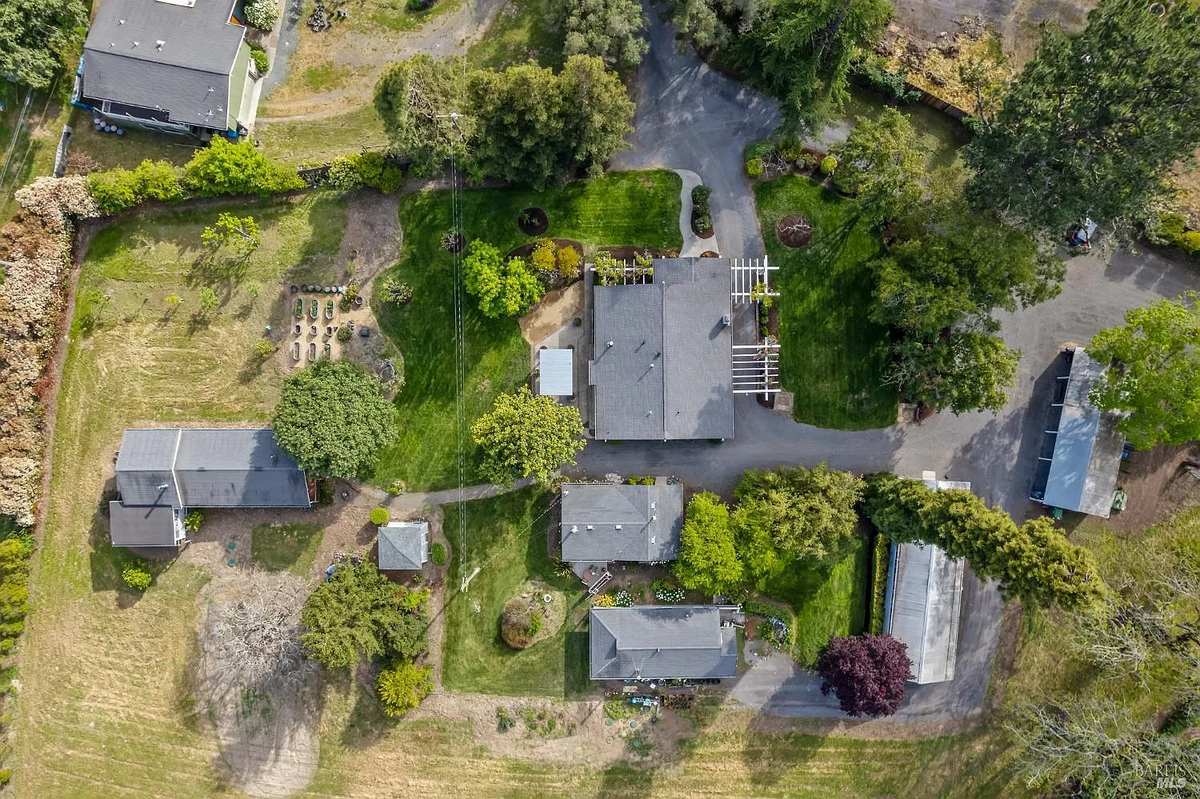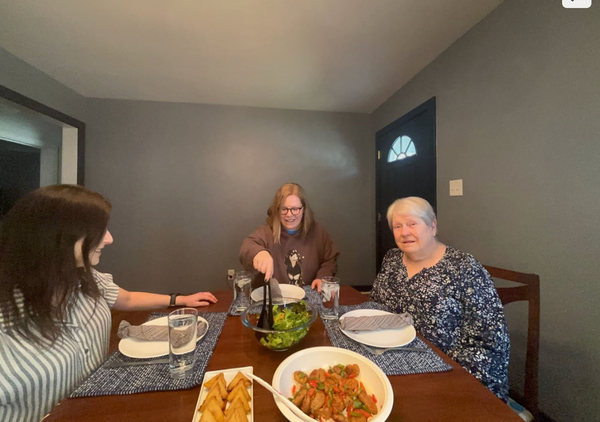Building a Family or Friend Compound in Sonoma County

This post is written by Graham Hunter — the Live Near Friends agent covering Marin and Sonoma counties. Graham helps people like you make the dream a reality. And he knows the lifestyle well. He built two different compounds in Sebastopol and Santa Rosa with his family and friends. We get a lot of questions about the specifics of building friend compounds in the North Bay, especially how to apply new housing laws. Graham interviews one of the top land use experts — Bob Biederman — to get the low-down.
It often begins with a simple conversation among friends: “Imagine if we bought this property together and created a community where we could all live near each other!” The vision of shared meals, supportive childcare, communal gardening, and social connections makes the idea of building a family or friend compound particularly appealing. However, transforming this vision into reality is far from straightforward. Zoning laws, septic capacity, sewer and water infrastructure, building codes, and municipal regulations quickly reveal themselves as significant hurdles. Each one adds complexity, time, and potential cost to your project.But don't let this discourage you. In California, and specifically in Sonoma County, recent zoning and land-use regulations have opened new opportunities to build your ideal compound “by right.” This means if you meet all the outlined criteria, approval is guaranteed. I spoke with Bob Biederman, zoning and land use expert and co-founder of Groundswell Management, along with his wife Abra, who help property owners with zoning, land use, and construction management. Bob's extensive experience includes leading the Sonoma County Resiliency Permit Center after the 2017 wildfires and providing comprehensive zoning and building solutions for homeowners, builders, architects, and real estate agents throughout Sonoma County. Bob shared invaluable insights and strategies on successfully adding density to your property or identifying properties capable of accommodating future development. Here are some of the strategies and tips he shared.
Key Strategies for Adding Density to Your Property
1. ADUs; Sonoma County allows 3 per property
Accessory Dwelling Units (ADUs) have become one of the most impactful options for increasing density in recent years. Sonoma County, taking cues from progressive California state legislation, now permits 3 ADUs on a single parcel. Specifically, a property can have:
- One attached ADU (max of 1,200 square feet)
- One detached ADU (max of 1,200 square feet)
- One Junior ADU (JADU), typically within the existing footprint, max of 500 square feet)
Recent laws, such as Assembly Bill 1211 and Senate Bill 684, have further enhanced the viability of ADUs, particularly on multi-family properties. These laws reduce parking requirements, streamline the approval process, and exclude Accessory Dwelling Units (ADUs) from traditional density calculations, making them easier and more affordable to build.However, be cautious about exclusionary zoning like “Z combining district” that may disallow this. It’s also crucial to consider septic and sewer capacity. Outside city limits, many properties rely on septic systems, which must be carefully planned to support additional dwellings. The best way to ensure that there is enough space for an additional septic system is to have acreage. Septic systems must be 100 feet from any wells (including the neighbor’s well), and percolation tests must be done. If the soil doesn’t percolate water well, then you may need an engineered or mounded septic system, which is much more expensive, but not always a deal-killer.

2. Cottage Housing Developments
Cottage housing developments offer another attractive solution, particularly for those who value community and a sense of shared space. This model typically involves building several smaller homes—usually around 800 square feet each—clustered around shared gardens or common areas.In Sonoma County, up to four units can typically be built “by right,” meaning no special conditional use permits are needed. This can greatly simplify your planning process. Cottage housing creates a natural balance between private living and community interaction, making it ideal for families and friends who want close connections but also appreciate personal space and privacy.Cottage Housing Developments are limited to Low Density Residential (R1) and Medium-Density Residential (R2) zones on parcels located in Urban Service Areas (on Sewer). Also, you’ll need at least an 8,000 square foot lot with 1 cottage for each 2500 square feet. You can build three cottages “by right” and need a use permit to add additional cottages.
3. Pod-Style Living: A Nod to Sonoma’s Communal Heritage
What defines a bedroom? Would it surprise you to learn that there is nothing in the building code that requires that bedrooms be attached to a house? Drawing inspiration from Sonoma County’s rich history of hippie communes from the 1960s and 1970s, pod-style living is an innovative approach to communal housing. In this arrangement, residents share a central common structure that includes communal kitchens, dining, and living spaces, while private bedroom pods surround the common area.Although not explicitly detailed in zoning codes, pod-style developments are permissible with careful planning and clear communication with county officials. Bob emphasizes that clearly articulating your community-focused intentions and highlighting historical precedents within the county can significantly ease the permitting process.

4. Leveraging Senate Bill 9 (SB 9)
Senate Bill 9 has opened new avenues for increasing density on properties traditionally zoned for single-family homes. Under SB 9, property owners can either split their existing lots or build up to four units without undergoing the complex subdivision processes typically required.This option is particularly appealing for larger parcels, as it simplifies requirements related to access, easements, septic systems, and overall infrastructure. Bob also points out that, intriguingly, SB 9 does not mandate a lot split—owners can choose to construct multiple units on a single lot, further simplifying the development process.Here is an overview of the places where properties have preliminary approval (in green) for SB9 lot splits in Sonoma County. See the interactive map here.

High-Level Tips from Bob Biederman
1. Know Your General Plan
Every county and city in California has a general plan—a strategic document outlining long-term development goals. Familiarizing yourself with Sonoma County’s general plan can offer valuable insights into areas earmarked for increased density and community development. Purchasing property within or near these identified areas can streamline your development and approval processes significantly, rather than fighting an uphill battle.
2. Evaluate Infrastructure Early
Infrastructure—particularly septic, sewer, and water systems—is a fundamental factor that can significantly influence your project’s viability and cost. Rural properties often require extensive septic evaluations and potentially expensive upgrades or installations to meet county health requirements. Engaging professionals to assess these systems early on can prevent costly surprises and provide clear insight into the feasibility of your plans.
3. Clarify Your Vision Clearly and Early
Successfully creating a family or friend compound starts with honest, detailed conversations among your group. Clearly establish your communal goals, individual needs for space and privacy, financial resources, and flexibility regarding zoning requirements and housing designs. Bob emphasizes that clearly defining your shared vision from the outset ensures your project aligns closely with everyone’s expectations, helping prevent conflicts and delays later in the process.Sonoma County’s zoning landscape, supported by progressive California legislation, provides unique and exciting opportunities to build a family or friend compound tailored exactly to your community’s dreams and needs.





